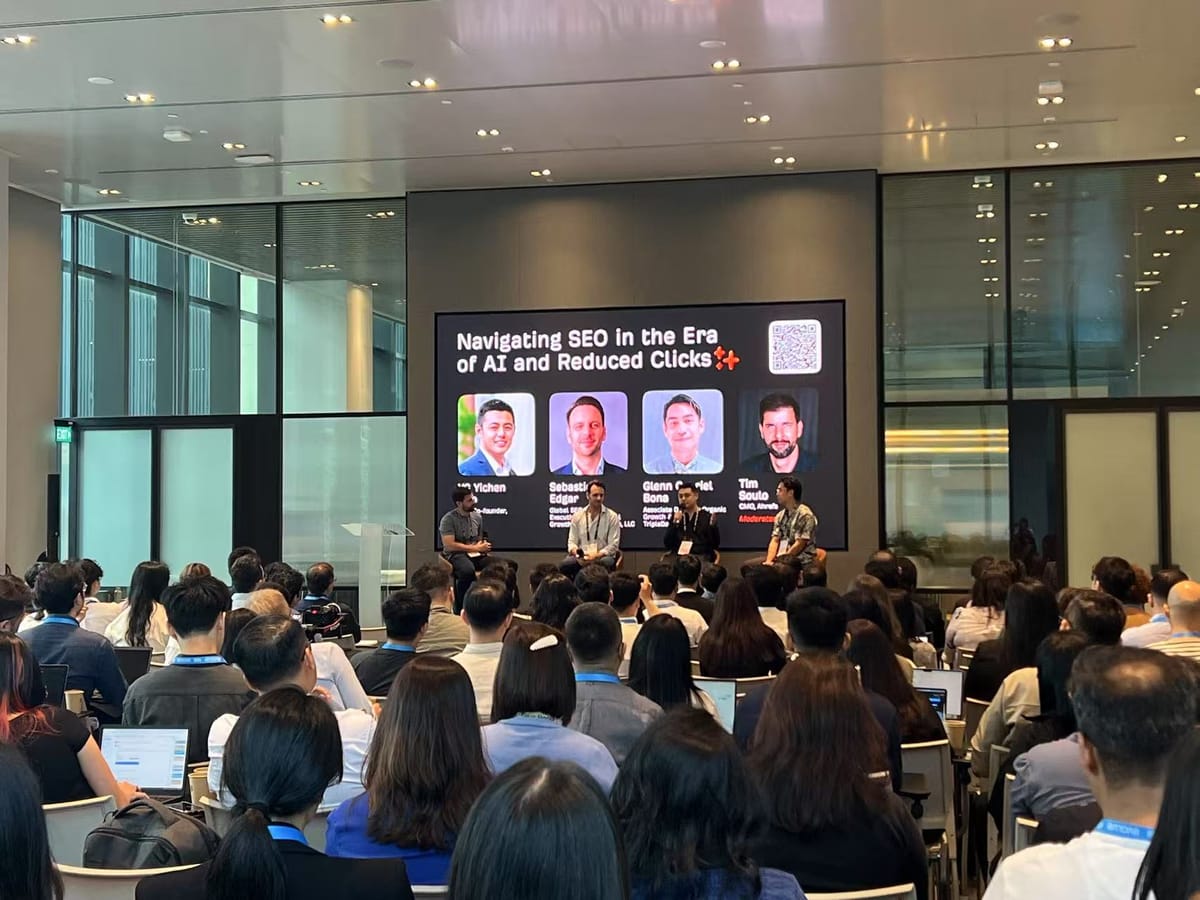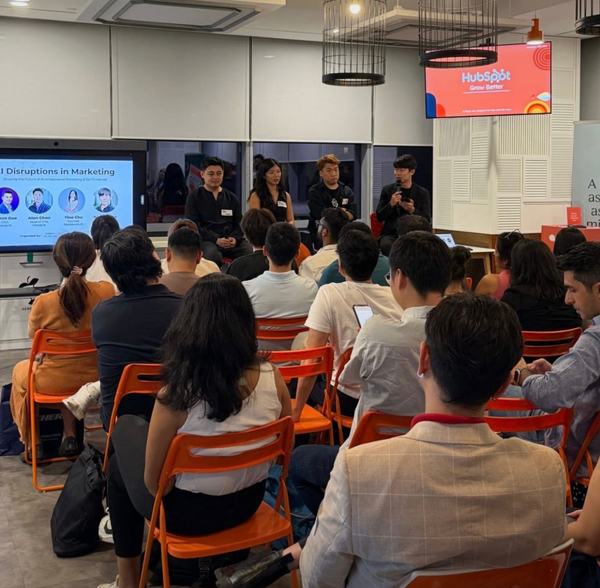2025 Programmatic SEO Guide

Content
- Chapter 1: Why Competitors Have Much Higher Search Traffic Than You
- Chapter 2: What is Programmatic SEO (pSEO)
- Chapter 3: Keyword Strategy for Programmatic SEO
- Chapter 4: Mass Generation of High-Traffic Landing Pages
- Chapter 5: Common Challenges in Programmatic SEO
- Chapter 6: Core Elements of Technical SEO Optimization
- Chapter 7: Future of SEO: GEO (Generative Engine Optimization)
Chapter 1
Why Competitors Have Much Higher Search Traffic Than You
Your Competitors Are Massively Gaining SEO Traffic, While You May Still Be Stuck with Traditional Optimization Methods.
Here are some leading AI tools that have seen explosive growth in organic traffic in just a few months since 2023. This is purely organic traffic—not paid Google Ads. How did they achieve this?
Top AI Tool 1: Achieved 30x free organic traffic on Google in 6 months.
Top AI Tool 2: Achieved 100x free organic traffic on Google in 15 months.
Top competitors leverage programmatic SEO (pSEO) to create pages at scale, covering a vast number of long-tail keywords. By combining automated content generation with structured data, they have achieved a 10x traffic increase on Google. For instance, Canva and DeepL have used pSEO to massively expand their keyword coverage, leading to exponential traffic growth. If you don't take action, you will continue to fall behind in the industry.
This is Canva, the king of SEO traffic: 300M visits—a volume impossible to achieve just by running ads. So, how did they do it?
How Do Canva and DeepL Do It?
Canva: Expanding Keyword Matrix with pSEO
Canva has used programmatic SEO to generate tens of thousands of "template" pages, such as:
- "Instagram Post Template"
- "Business Card Template"
- "YouTube Thumbnail Maker"
These pages align perfectly with search demand, securing top SEO rankings and making Canva the traffic leader in the design tools industry.
DeepL: Building a "Language + Keyword" Matrix
DeepL uses the "[Language A] to [Language B] translation" keyword combination through pSEO to generate tens of thousands of SEO pages, such as:
- "English to Spanish translation"
- "French to German translator"
- "Best AI translation tool for business"
These pages precisely match user search intent, allowing DeepL to outperform many traditional translation tools (like Google Translate) in the AI translation market.
Why Your SEO Traffic Is Low
1. Insufficient Keyword Coverage = Too Little Traffic
Many businesses struggle with SEO because they lack a data-driven strategy. If your website has low traffic, it might be due to:
- Shallow SEO strategy: Limited keywords mean missed traffic opportunities.
- Competitors dominating long-tail keyword coverage, with 10x your traffic and rankings.
According to Ahrefs, the top 10 ranking pages on Google cover an average of 893 keywords. If your site only covers 100, you're missing out on 80% of potential traffic.
2. Low-Quality Content = Google Penalty
- Over-reliance on automatically generated content without proper optimization leads to low-quality content.
3. Lack of High-Quality Backlinks
- Fewer high-authority backlinks negatively impact your domain authority.
Why AI-Driven SEO Is Essential
Manual SEO does not scale, while AI-driven programmatic SEO enhances efficiency and reach.
For example:
- If you cover only 100 keywords while your competitor covers 10,000, they will dominate search results.
The result?
- Low traffic → Lost revenue, reduced brand authority, and shrinking market share.
Adopting AI-driven programmatic SEO is no longer optional—it's a necessity.
Chapter 2
What is Programmatic SEO (pSEO)
Scaling with AI
- Programmatic SEO (pSEO) = Automatically generate thousands of webpages to precisely target long-tail keywords.
- Example: Batch-creating dynamic pages like "Translate [X] into [Y]" or "[Industry] market research template".
Why is pSEO effective?
- Mass coverage of low-competition, long-tail keywords to drive traffic.
- Creating multilingual pages: English-language content and products are highly competitive, while significant search volume comes from other languages. Generating pages in 10+ languages multiplies your keywords by tenfold, rapidly increasing traffic.
Case study: Canva.com
Created dedicated landing pages for all templates and features (e.g., resume template, birthday card template, etc.).
- Google indexed 1.67 million webpages.
- Monthly organic traffic reached 286 million.
Scientific principles behind programmatic SEO (pSEO)
By generating numerous sub-pages covering extensive long-tail keywords—low competition, high volume—small amounts of traffic add up significantly over time.
70% of search traffic comes from long-tail keywords, yet only 5% of businesses systematically target them.
The Four Core Levers of pSEO:
1. Keyword Matrix
Core concept: Using AI or data analysis to generate "Keyword + Template" combinations (e.g., "City + Service," "Industry + Tool").
Purpose: Mass-create high-quality pages targeting specific search intent to expand coverage.
Examples:
- Formula = X logo design: "New York logo design," "Los Angeles logo design," "Chicago logo design"
- Formula = Best X Tools: "Best SEO tools," "Best AI copywriting tools," "Best design tools 2024"
2. Search Intent Segmentation
Core concept: Identify search intent and optimize content according to three categories: Informational, Commercial, and Transactional.
Approximate ratios (example only):
- Commercial: ~50% (e.g., "Best pSEO tools comparison")
- Transactional: ~20% (e.g., "Buy pSEO services")
- Informational: ~30% (e.g., "What is pSEO?")
Purpose: Ensure pSEO-generated content aligns with user search intent, improving conversion rates.
3. Content Relevance Optimization
Core concept: Use algorithms such as TF-IDF, NLP, and vector search to enhance semantic relevance and boost SEO rankings.
Purpose:
- Ensures generated pages aren't low-quality content but highly relevant to user queries.
- AI automatically adjusts keyword density and internal linking structure, boosting page authority.
Optimization strategies:
- Analyze competitors' pages using TF-IDF to add highly relevant terms.
- Use models like BERT and GPT to enhance content quality and better match user intent.
4. Backlink and Internal Linking Networks
Core concept: Programmatically create resource pages and automate internal linking structures to attract natural backlinks.
Purpose:
- Increase overall website authority (Domain Authority).
- Strengthen internal SEO by effectively distributing link equity, improving search rankings.
Strategies:
- Automatically generate resource pages like "Top AI design tools in 2024" to attract natural backlinks.
- Programmatically build intelligent internal linking structures between relevant pages.
- Automate outreach efforts (e.g., HARO, guest post outreach) to gain backlinks.
Result: SEO effects grow cumulatively and exponentially
Chapter 3
Keyword Strategies for Programmatic SEO (pSEO)
Efficient programmatic SEO requires thorough keyword research. Transactional and commercial keywords should be prioritized for creating dedicated landing pages or tool-specific pages, as these have higher conversion rates. Informational keywords are best suited for blog posts since they typically have lower conversion rates. Additionally, informational articles generated by AI without specialized AI agents tend to be low-quality and may risk penalties from Google.
Three Main Methods for Keyword Research:
- Competitor Keyword Analysis
- Competitor keyword hijacking: Create pages such as "[Competitor Name] Alternative" to attract users seeking alternatives.
- Fill gaps with matching and related keywords.
Besides directly analyzing competitor keywords, pSEO strategies also leverage keyword research tools like Ahrefs or Semrush's Keyword Explorer to expand your keyword database.
1. Input Target Keywords:
For instance, if you want to optimize for "AI translation", you could input terms like:
- AI translation
- translation tool
- how does AI translation work
2. Analyzing Two Types of Keyword Data
Matching Terms:
These keywords must include your input terms but may have different variations.
Examples:
- best AI translation tool
- AI translation for business
- AI translation software free
Purpose: You can use these keywords to generate multiple SEO pages, each aligned with different user search intents.
Related Terms:
These keywords do not strictly contain your original input but are closely related.
3. Leveraging AI and Large Language Models (LLMs)
Convert keywords into reusable formulas
Discover hidden keyword opportunities using AI algorithms:
- Beyond surface level: AI algorithms can sift through vast datasets, uncovering valuable long-tail keywords overlooked by humans. These low-competition keywords are central to pSEO, providing excellent ranking opportunities for specific search queries.
- Semantic understanding: AI does more than simple keyword matching; it deeply understands semantic relationships, identifying related keywords with the same meaning or intent.
Optimize your strategy with AI algorithms:
- Keyword grouping: AI clusters keywords, helping identify core topics and enabling the creation of precise content aligned with user search intent, thereby enhancing page SEO performance.
- Gap analysis: AI analyzes competitors' keyword rankings, discovering opportunities that competitors have overlooked. Targeted optimization based on this insight enables you to outrank competitors effectively.
Use the CapGo.AI tool to generate keywords and distill them into formulas for scalable strategies.
Advanced tip: Generate content based on entity names
Example: "Instagram text-to-speech tool [Tool Name]" convert the content to audio format for social media distribution.
Keyword Grouping and Traffic Prediction
- Follow Ahrefs' keyword clustering principles to group 2,000 long-tail keywords into around 300 topic clusters.
- Use CapGo AI's traffic prediction model to prioritize development by identifying keywords with:
- High commercial value (CPC > $2)
- Rising search trends (Year-over-Year growth > 30%)
- Low competitor coverage (SERP market share < 20%)
Chapter 4
Mass-Generating High-Traffic Landing Pages
Generate landing pages in bulk by continuously replacing content within structured templates. Our example site is CapGo.ai:
Prioritize Landing Pages and Tool Pages:
Choose transactional and commercial keywords to create dedicated landing pages or tool-specific pages, as these have high conversion rates. Informational keywords should be reserved for blog posts, as they generally have lower conversion rates, and AI-generated informational content tends to be lower quality if not created using specialized AI agents, which may lead to penalties from Google.
Prioritize Coverage of High Search-Volume Keywords:
- Use CapGo AI to identify keywords with a monthly search volume above 1,000 and low competition.
- Example: "YouTube video summarizer" has stronger conversion intent than "how to summarize a video."
Multilingual SEO Leverage Effect
On average, each additional language covers 42% more long-tail keywords (source: Ahrefs global keyword database).
Due to lower competition in non-English markets, creating multilingual pages can quickly boost traffic.
Example 1:
- The keyword "YouTube video summarizer" has higher potential traffic in Spanish-speaking markets compared to English, due to lower competition.
- Strategy: Expand multilingual versions of your website to reach more markets.
Example 2:
Deepl's Programmatic Multilingual Landing Page Strategy:
Multilingual Strategies to Expand Audience Reach
Step 1: Semantic Mapping
Use CapGo AI's cross-language keyword mapping tool to automatically identify three match types for core English keywords in target languages.
Step 2: Generate Multilingual Pages with Deep AI Localization
Apply a five-layer optimization that surpasses basic machine translation:
- Terminology Injection: Automatically import industry-specific glossaries (e.g., legal/medical terms).
- Cultural Filtering: Remove sensitive content (e.g., emojis are restricted in German-speaking regions).
- Localized CTAs:
- English: "Get Started Free"
- Spanish: "Prueba Gratis Ahora"
- Japanese uses honorific speech:「無料で始める」
- Unit Conversion: Automatically convert currencies and measurements ($ → €, inches → centimeters).
- Compliance Review: Automatically flag GDPR/CCPA-related statements.
Step 3: Technical SEO Architecture Design
Use an hreflang clustering strategy
Performance Optimization Strategy:
- Dedicated CDN Nodes per Language:
- Deploy independent CDN nodes for each language, reducing latency to under 50ms.
- Multilingual Caching Engine:
- Utilize CapGo AI's multilingual caching engine to reduce Time To First Byte (TTFB) by 42%.
Multilingual Performance Monitoring System
Key Performance Indicators (KPIs)
Case Study: A cross-border e-commerce site generated pages programmatically:
- English: 5,000 pages → monthly traffic 1.2M visits
- Spanish/French/German: 2,000 pages each → monthly traffic 400-600K visits per language
- Overall ROI increased by 290% (compared to single-language operation).
Guide to Avoiding Pitfalls:
Mistake 1: Basic Machine Translation
- Incorrect Example: Directly translating the Chinese word "干货" as "Dry Goods" (correct translation: "Practical Guide").
Mistake 2: Ignoring Regional Differences
- Solution: Use CapGo AI's regional semantic analyzer to automatically detect and adapt to regional differences, such as:
- Variations between Brazilian and European Portuguese terminology.
- Right-to-left (RTL) layout adaptation for Arabic content.
Chapter 5
Common Challenges in Programmatic SEO
1. Generating a Large Volume of Pages with No Search Traffic
When businesses attempt programmatic SEO independently, they often encounter several common problems:
- Generating a large volume of webpages but failing to attract any meaningful traffic.
- Being penalized by Google for low-quality or duplicate content perceived as spam, resulting in decreased overall traffic.
- Not only failing to meet expectations but potentially harming their existing traffic performance.
A primary reason companies generate many pages without gaining traffic is the lack of comprehensive and detailed keyword research. Often, these pages contain content without genuine user search demand. Without thorough keyword research, companies produce many pages with little or no search volume. To acquire stable and effective search traffic, professional SEO guidance and systematic keyword research are essential.
2. Google Penalties Due to Spam Content
In an AI-driven SEO strategy, the critical factor for success lies in creating multi-step, multi-data-source AI agents for content generation while avoiding the classification of AI-generated content as spam by Google. While AI facilitates large-scale content generation, complete reliance on AI alone can lower content quality. Therefore, adopting the following strategies, combining AI with human editing, is recommended:
Strategy 1: Prioritize AI-generated tool-oriented landing pages
Tool-oriented pages are preferable, while blog-style informational pages are secondary, as AI-generated informational content often lacks depth. Pages targeting clear user intent (tool pages) have a higher conversion potential.
Strategy 2: Multi-step AI Agent Generation with Human Review
- Multi-step AI-generated drafts: Utilize web searches combined with collaborative efforts of multiple LLM-powered AI agents, enriched with high-quality image and video generation, to produce high-quality content drafts.
- AI provides content frameworks and keyword-optimized drafts but does not directly publish.
- Human review and refinement:
- Ensure grammatical correctness and logical consistency, improving readability.
- Add brand personality to better align with the target audience's preferences.
- Incorporate unique insights, avoiding monotonous AI-generated styles.
Strategy 3: Incorporate Data-Driven Content
AI excels at producing general content, but Google favors unique, data-backed content.
Optimization techniques:
- Enhance content value by integrating proprietary data (user research, industry trends, etc.).
- Generate industry reports citing authoritative data sources, increasing credibility.
- For example, create an "AI SEO Trends Report 2025," combined with real-world cases, to establish authoritative content.
Strategy 4: Optimize User Experience (UX)
- AI-generated content should prioritize user needs, not just SEO objectives.
- Enhancing Interaction Experience:
- Incorporate interactive elements such as forms, calculators, and personalized recommendations to engage users effectively.
Chapter 6
Core Technical SEO Optimization Factors
The Role and Methods to Improve Backlinks
Importance
Backlinks are a critical ranking factor in Google, determined by both quality (authority) and quantity.
Underlying principle:
The more authoritative websites link to you, the more Google recognizes your site's value.
Authority Calculation Formula:
Page Authority = Σ(Weight of Source Backlink × Relevance Factor) ÷ (Total Number of Backlinks)Source Weight:Determined by Ahrefs' DR (Domain Rating).(Example: A DR 80 backlink is 150x more valuable than a DR 30 backlink.)Relevance:Backlinks from websites within the same niche increase their value by approximately 300% (source: Moz research).Google's Evaluation Criteria:Expertise: Professional authority of the backlink source (e.g., medical websites should have backlinks from .gov or .edu).Authoritativeness: Industry authority of the referring domain (measured via SEMrush's "Authority Score").Trustworthiness: Clean historical record of backlink pages (no history of spammy links).
Methods to Enhance Backlinks
1. Natural Link Acquisition
- Attract media coverage through company achievements (e.g., featured by authoritative media like TechCrunch).
Technical Implementation:
- Use CapGo AI's news trend tracker to automatically identify industry hot topics.
- Case Study: An AI company published the "China AIGC Application White Paper" aligned with GPT-4's launch, gaining backlinks from 36 media outlets.
2. Directory Listings
- Upload company information to industry-specific directories (e.g., AI tool directories).
Selection Criteria:
- Directories with human review processes
- Vertical specificity (e.g., fintech companies should only list on Crunchbase or AngelList)
- High-quality traffic (SEMrush Traffic > 5,000/month)
3. Ranking Campaigns (e.g., Product Hunt)
- Products ranked in the top 5 are often mentioned by third-party websites, resulting in natural backlinks.
Organic Search Optimization Strategy
Core Logic:
- Traffic depends heavily on keyword quantity and search rankings.
- The higher your ranking, the more concentrated your traffic will be (e.g., #1 position can receive 30%+ of total search traffic; after rank 10, virtually zero traffic).
Example:
Keyword "PDF summarizer" receives 12,000 monthly searches in the U.S.
- The website ranked #1 captures about one-third of the traffic, while websites ranked beyond #10 get minimal traffic.
Keyword Strategy
Bulk Generation:
- Expand using structured formula templates (e.g., "Language A → Language B translation tool," potentially generating tens of thousands of keywords).
- Example: ChatGPT leveraged multilingual pages to capture lower-competition markets such as Spanish.
Tool-Assisted Approach:
- Keyword Explorer: Analyze keyword search volume and competitor data.
- ChatGPT: Generate keyword formulas (e.g., "AI tool + industry + feature").
Technical Optimization
- H1/H2 Headings: Properly structure heading tags to help Google understand page content priorities.
- Meta Descriptions: Craft appealing summaries to increase click-through rates and improve indexing by Google.
- URL Optimization: Avoid random characters; use clean, readable structures (e.g., /pdf-summarizer).
- Regularly audit pages with SEO diagnostic tools (e.g., SEO Check) to ensure effective technical optimization.
Intelligent Sitemap Management
- Ensure all programmatically generated pages are indexed by search engines.
- Utilize CapGo AI to automatically update sitemaps, synchronizing new pages in real-time.
Chapter 7
A New Frontier in SEO: GEO (Generative Engine Optimization)
A New Frontier in SEO: GEO (Generative Engine Optimization)
Emerging Direction: GEO (Generative Engine Optimization)
Definition:
GEO (Generative Engine Optimization) is the practice of optimizing content specifically for AI-driven search engines, such as ChatGPT web search, Deepseek web search, and Perplexity. The essence of GEO involves enhancing content visibility and citation likelihood in AI-generated responses through Retrieval-Augmented Generation (RAG). SEO efforts now extend beyond Google to include AI-centric search optimization.
Deep Dive into GEO Background
With the widespread adoption of generative AI (such as ChatGPT and Bard), user search behaviors have transitioned from traditional keyword queries to more natural, conversational interactions. AI-powered search engines now focus not only on webpage rankings but also on the authenticity, completeness, and relevance of content to generate accurate and valuable answers.
Key Differences Between GEO and Traditional SEO
- Traditional SEO: Primarily emphasizes keyword rankings, link building, and technical factors such as page load speed.
- GEO: Focuses on how AI comprehends, references, and generates content. Contextual completeness, explainability, and authority of content become significantly more critical.
Core Elements of GEO
- Semantic Content Optimization:
- Organize content clearly around specific topics. Avoid keyword stuffing, emphasizing logical coherence and semantic continuity.
- Question-and-Answer (Q&A) Content Structure:
- Adopt Q&A formats and FAQ modules to facilitate AI content identification and extraction.
- Metadata and Structured Data Optimization:
- Implement structured data markup suitable for AI retrieval (e.g., schema.org), improving AI's understanding and citation probability of your content.
RAG (Retrieval-Augmented Generation) Optimization Techniques
- Ensure Content Authority:
- Cite authoritative sources and provide clear, reliable data to enhance the probability of AI citation.
- Increase Granularity and Organization:
- Structure content clearly into sections and paragraphs, enabling efficient AI retrieval and generation.
- Regular Content Updates and Maintenance:
- AI-driven searches prefer timely and regularly updated content. Continuously refresh content and clearly indicate timestamps.
Future Trends in GEO
- AI-First Content Strategy:
- Content creation will increasingly align with AI crawling patterns and conversational user queries, moving toward an "AI-centric" content model.
- Multimodal Content Optimization:
- Optimization of images, videos, and audio content, alongside text, will gradually become integral to GEO. AI search engines will increasingly utilize multimodal content to enrich search results.
- Data-Driven Optimization:
- With the growing adoption of AI analytics tools, iterative content creation and optimization strategies driven by AI data feedback will become standard practice.
The rise of GEO signifies a new phase in search engine optimization. Businesses and website managers must swiftly adapt to this emerging trend, expanding their optimization focus from traditional search to AI-driven search, strategically developing their content ecosystems to gain competitive advantages in the future of search.
CapGo.AI Service Overview
- End-to-end Programmatic SEO solutions designed to effortlessly deliver results:
- Keyword Research: Identify hundreds of high-traffic keywords that bring customers directly to your business.
- Multilingual Landing Page Generation: Automatically generate 200 landing pages per month, each localized in 10 languages, comprehensively covering long-tail keywords.
Collaborative AI Agents:
Multiple AI agents collaborate to generate high-quality web pages, enabling rapid overseas customer acquisition.
Take Action Now:
Contact us at [email protected]
About CapGo AI:
CapGo AI specializes in providing AI-driven Programmatic SEO services. We offer an end-to-end solution to help businesses generate batches of sub-pages that effectively target long-tail keywords, significantly increasing organic traffic.
CapGo.AI Team
Yichen Guo (YG)
Co-founder & CEO, CapGo.ai
Ten years ago, I was working in investment banking at Citibank in New York, stuck daily in tedious, repetitive spreadsheet tasks. Later, while pursuing my MBA at Harvard, I joined a productivity tool startup founded by alumni. This experience clarified my mission: to completely transform mundane, repetitive tasks into quicker, more efficient processes—especially in marketing.
The launch of ChatGPT sparked an inspiring idea: What if we could make spreadsheets as exciting as the movie “The Matrix”? Imagine every spreadsheet cell acting like a mini “Agent Smith,” automatically and efficiently completing repetitive tasks. Businesses could effortlessly generate thousands of webpages at a click, rapidly driving increased traffic.
Thus, CapGo.ai was born.
Yu Chen
CTO & Co-founder, CapGo.ai
My passion lies deeply in Artificial Intelligence (AI) and Machine Learning. Throughout my career, I've served as an AI and ML engineer at Grab, leveraging cutting-edge technology to solve real-world problems. Although I pursued a Ph.D. in AI at Nanyang Technological University in Singapore, I ultimately chose to leave academia for more practical industry challenges.
Beyond my professional endeavors, I am an avid AI enthusiast and independent researcher in Artificial General Intelligence (AGI). My passion for AI continually drives me to explore emerging frontiers, ensuring continuous learning and growth in this dynamic and opportunity-rich field.
Email: [email protected]
Website: https://capgo.ai/
Scan the QR Code to Learn More



